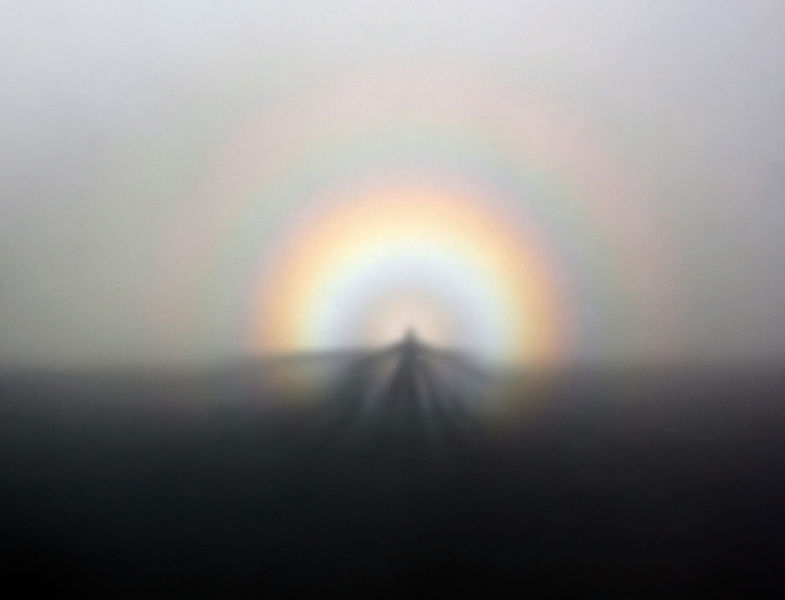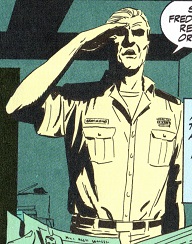


After stopping to listen, he describes being ‘seized with terror’ that resulted in him staggering blindly through the boulder fields the four or five miles down to Rothiemurchus Forest at the foot of the mountain. Descending from the summit in thick mist, Collie recalled hearing crunching footsteps following him, taking just one stride for every three or four of his. After a strange and frightening experience on Ben Macdui in 1891, Collie didn’t recount his story until attended a meeting of the Cairngorm Club in 1925. Norman Collie was the first to properly recount an encounter with the creature. While rumours of a strange presence on the mountain have been part of local legend for a long time, Chemistry professor and noted mountaineer J. The most well-known recollection of an encounter with the Grey Man is also the first recorded. The view of Ben Macdui from nearby Beinn Mheadhoin. Most common of all, the sound of heavy footsteps crunching across the gravel and scree of the barren upper slopes of Ben Macdui has been described by almost every witness that has reported an encounter with the mysterious presence. Others have reported only an unseen presence, often in the form of an uncomfortable feeling of being followed. More commonly referred to as the Grey Man of Ben Macdui, some witnesses have described the creature as a large humanoid covered with short hair. Translated to English, the name Am Fear Liath Mòr means simply ‘big grey man’. Thick fog is common high in the Cairngorms, frequently obscuring the creature from the view of climbers that sense its strange presence. Mountaineers have reported encounters with a creature that haunts the bleak summit of the mountain for over 100 years, although there is still little consensus as to what it looks like, or even if it has a corporeal form. The circular rainbow observed by Fawcett is often seen in conjunction with the Spectre and is referred to as a 'glory'.Īs is the case with many strange phenomena, the sighting of a Brocken Spectre was once thought to be a bad omen: possibly because one poor climber was said to have been so startled at the sight of this weird giant in the clouds that he stumbled and fell to his death! Thankfully, Fawcett – a man of Science – was well enough informed not to suffer the same fate.Am Fear Liath Mòr is the Scottish Gaelic name given to a being said to haunt the upper slopes of Ben Macdui, the highest mountain the the Cairngorms range in the East Highlands of Scotland and second tallest mountain in the British Isles. The Brocken Spectre, first described in 1780 by Johann Silberschlag, derives its name from the 'Brocken' peak in the Harz Mountains of Germany. This is an optical illusion in which the observer's shadow appears magnified upon the surface of the clouds.Īlthough Fawcett recognized the shadow as his own, he describes how "awe-inspiring" such a vision would be to someone without such understanding and suspects that contemporary portrayals of small brained giants, such as 'Jack and the Giant Killer', may stem from the shadows' unusual proportions: " The head was small, the eyes being of course in the centre of the circle, but the limbs in proportion to their distances, grew large, & the legs were of an immense length." Brocken Spectreįawcett writes that while measuring the rainbow, he noticed that his " black shadow was doing the same, & every gesticulation I made, could be distinctly seen against the white mist." The black shadow in question was a ' Brocken Spectre', 'broken bow' or 'mountain spectre'. Fawcett measured the sight using his "pencil held with outstretched arm" and his letter to Morris includes a sketch of his impression of the rainbow, along with notes concerning the colour of its rings, which ranged from "yellowish white" to "reddish". The "faintly coloured" circular rainbow he witnessed appeared "on the white mist which was driving up the valley".

In 1887, Fawcett wrote to RBG Kew's Assistant Director Daniel Morris, describing a circular rainbow and Brocken Spectre he observed one afternoon, while walking near Strawberry hill, in Jamaica's Blue Mountains. This story was originally highlighted by our friend and one-time team member Lindsay Rosener and it describes the unusual phenomenon that one 19th century plant hunter, William Fawcett, encountered during his time as Director of the Public Gardens and Plantations in Jamaica. We came across some of these stories recently and thought they were deserving of a wider audience. Before we started contributing to this blog, our team published some of the more interesting finds from the Directors' Correspondence in Kew's staff magazine VISTA.


 0 kommentar(er)
0 kommentar(er)
